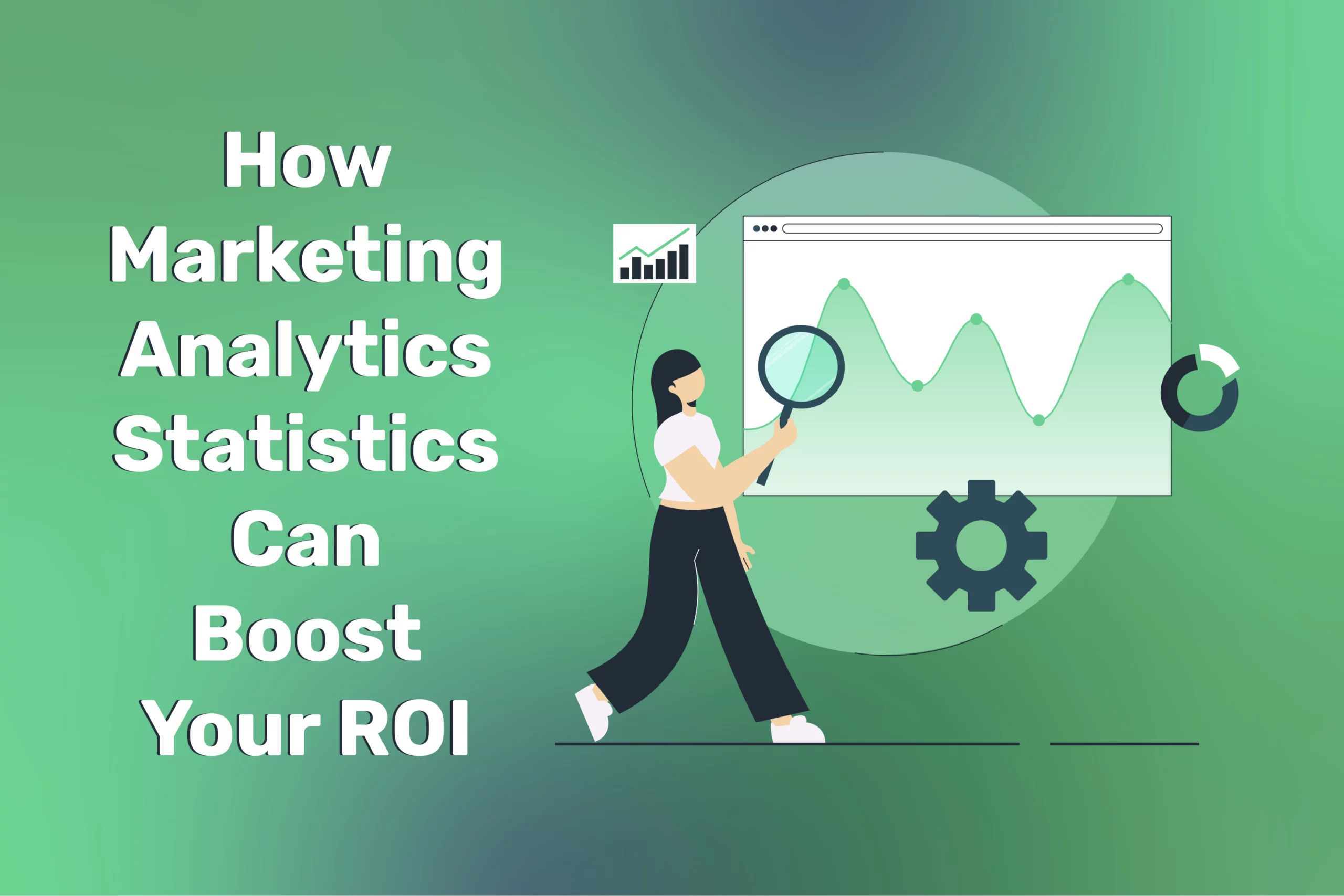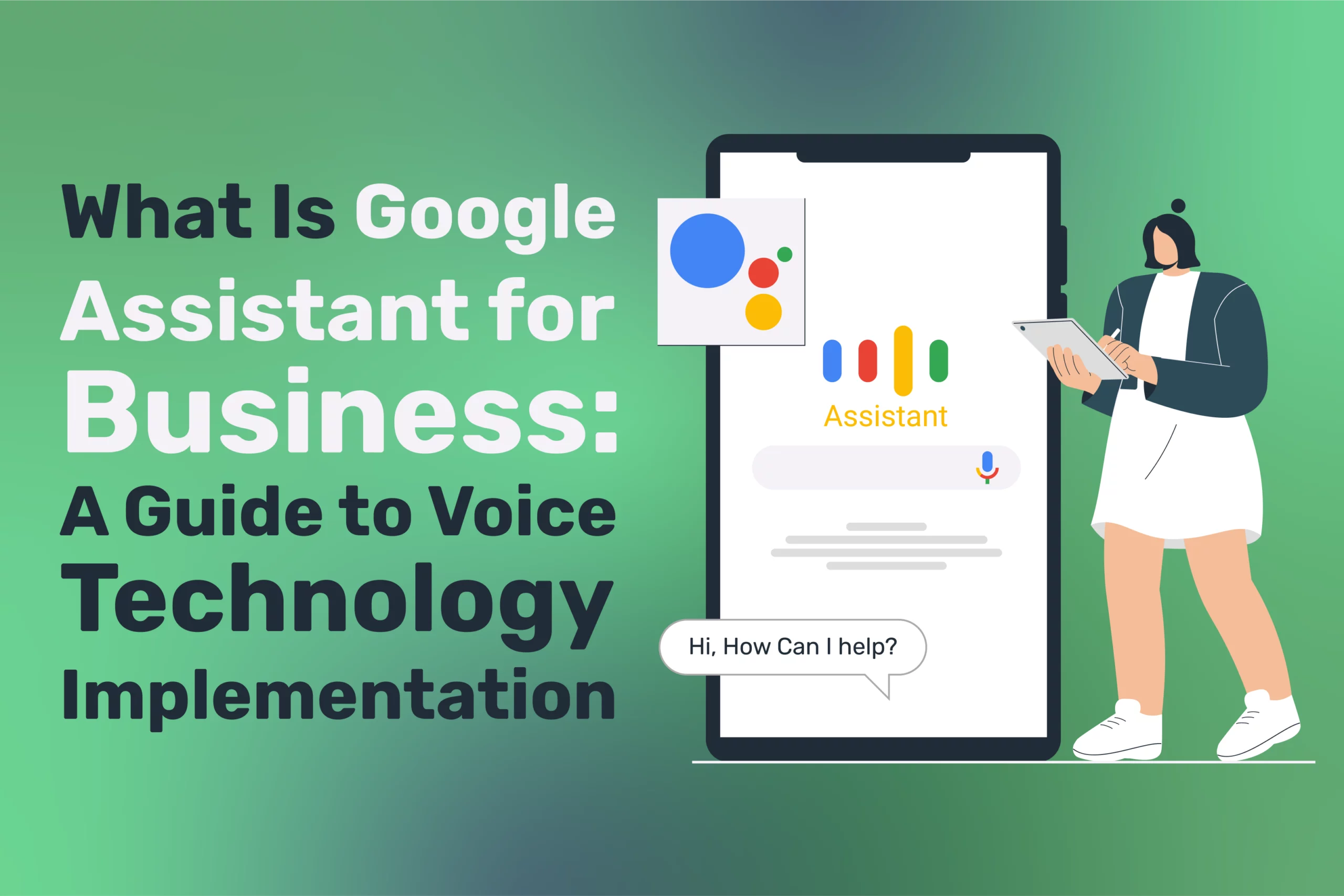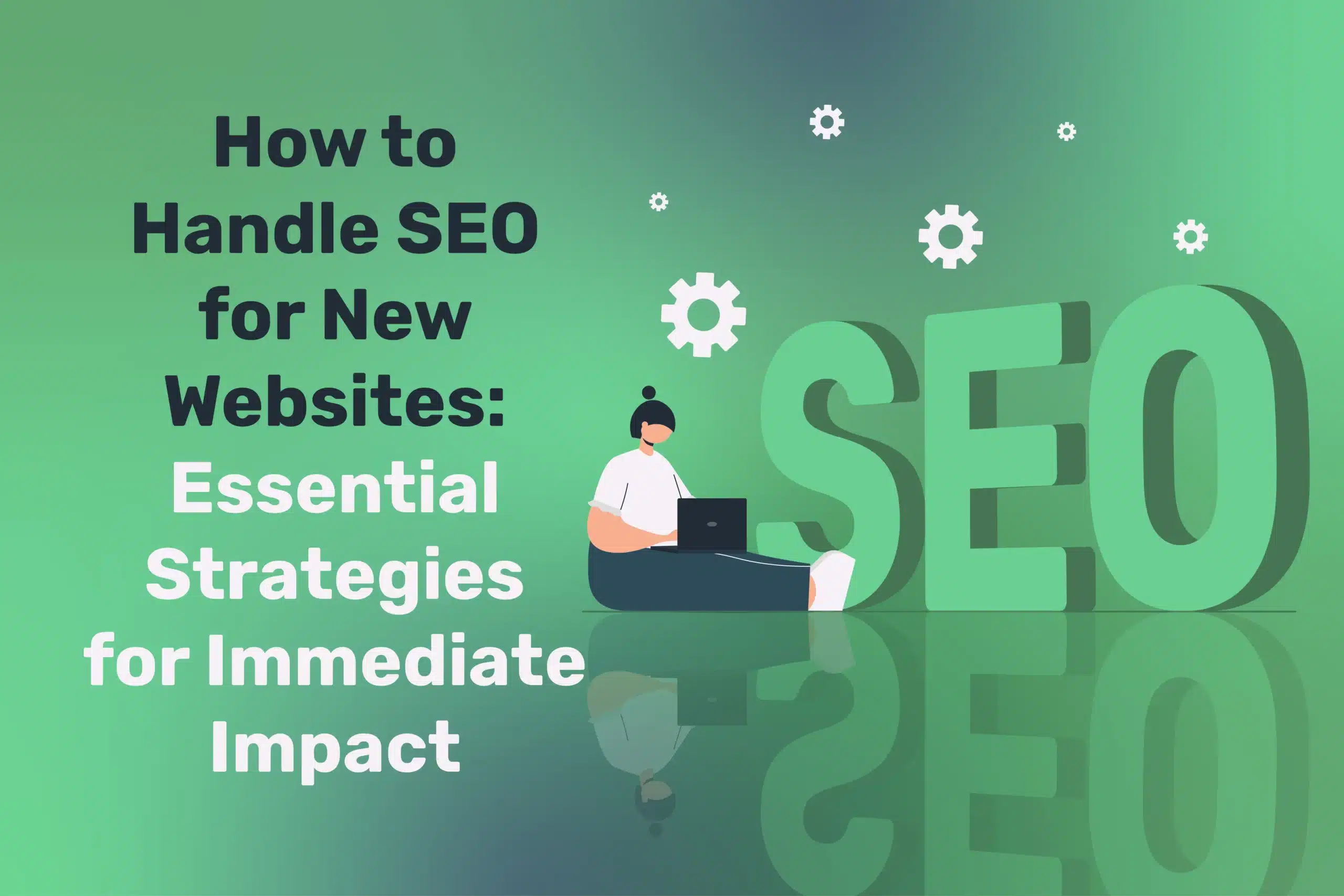
Overcoming Resistance to AI Adoption: Change Management Best Practices
Table of Contents
When adopting artificial intelligence, the technical hurdles—selecting tools, integrating data—often get the spotlight. Yet many AI deployments falter not because the algorithm fails, but because employees resist the transformation. Fears of job displacement, scepticism about “black box” decisions, or simple inertia can derail promising projects. In 2025, with more companies than ever trying to weave AI into daily operations, robust change management is critical for success.
In this article, we explore common sources of resistance to AI adoption and outline best practices for guiding teams through the transition—ensuring staff embrace AI as an ally, not an adversary. Whether you’re rolling out a new chatbot or implementing advanced analytics across departments, these change management strategies will help you navigate the human side of innovation.
“You can’t just install AI software and hope everyone’s on board. Overcoming fear and mistrust requires open dialogue, transparent goals, and genuine training—essentially human-focused leadership,” says Ciaran Connolly, Director of ProfileTree.
Resistance to AI Adoption: The Roots
Resistance to AI adoption often stems from fear of job displacement, lack of understanding, and uncertainty about its impact. Employees may worry about automation replacing roles, while businesses might struggle with implementation costs and integration challenges. Mistrust in AI’s decision-making and concerns over data privacy further contribute to hesitation. Addressing these root causes with clear communication, trAIning, and transparency is key to fostering AI acceptance and driving successful adoption.
Fear of Job Loss
AI conjures images of automation supplanting entire teams. If staff suspect they’ll become redundant, morale plummets, leading to sabotage or refusal to adopt the new tools. Communicating early that the intent is to augment rather than replace roles can defuse concerns.
Lack of Clarity About AI’s Purpose
When employees see a new platform abruptly introduced with little explanation, they might perceive it as an unnecessary upheaval. Or they worry it’s an experiment that might complicate their workflow. Transparent goals—“We aim to cut data entry by 50% so you can focus on client relationships”—anchor the project’s benefits.
Distrust of Algorithmic Decisions
AI recommendations can seem opaque—why does the system reject this loan application, or suggest a specific marketing tactic? People resist if they can’t understand or challenge the logic. Building trust in AI’s fairness and reliability is crucial.
Habitual Comfort Zones
Human beings are creatures of habit. Even if a new AI solution is more efficient, staff may prefer the old manual processes they’ve mastered. Overcoming inertia requires compelling evidence, training, and sometimes mild pressure from leadership.
Change Management Fundamentals for AI Projects
Successful AI adoption requires a strong change management strategy to guide organisations through transition. This involves clear communication, leadership support, and structured training to address employee concerns and ensure smooth integration. Encouraging collaboration, setting realistic expectations, and providing ongoing support help teams adapt to AI-driven workflows. A well-planned change management approach fosters acceptance, minimises resistance, and maximises the impact of AI initiatives.
Early Stakeholder Involvement
Before finalising the AI solution, involve representatives from each department or user group—like finance staff for invoice automation, sales reps for lead scoring. Gather input on pain points, favourite features, or potential red flags. This co-creation fosters a sense of ownership rather than top-down imposition.
Transparent Communication Plan
Craft a communication strategy outlining:
- Why the AI project is happening (link to business goals or user benefits).
- How it will affect daily workflows (clear usage guidelines, timeline).
- What employees can expect in terms of training, ongoing support, or feedback loops.
Use multiple channels (town hall meetings, team-level briefings, email updates, intranet Q&A pages) to keep staff informed.
Leadership Champions
Senior leaders or departmental heads must actively endorse AI adoption, not just sign off budget lines. If employees sense confusion or hesitation from the top, they mirror that sentiment. Leaders who take part in training sessions, share success stories, or personally demonstrate the AI tool’s usage inspire greater acceptance.
Pilot, Learn, Scale
Rather than forcing company-wide implementation overnight, pilot the AI solution in one department. Evaluate real-world performance, gather staff feedback, fix kinks, and share success metrics. Once staff see a successful pilot, they’re more open to adopting it in other areas.
Mitigating Job Loss Fears
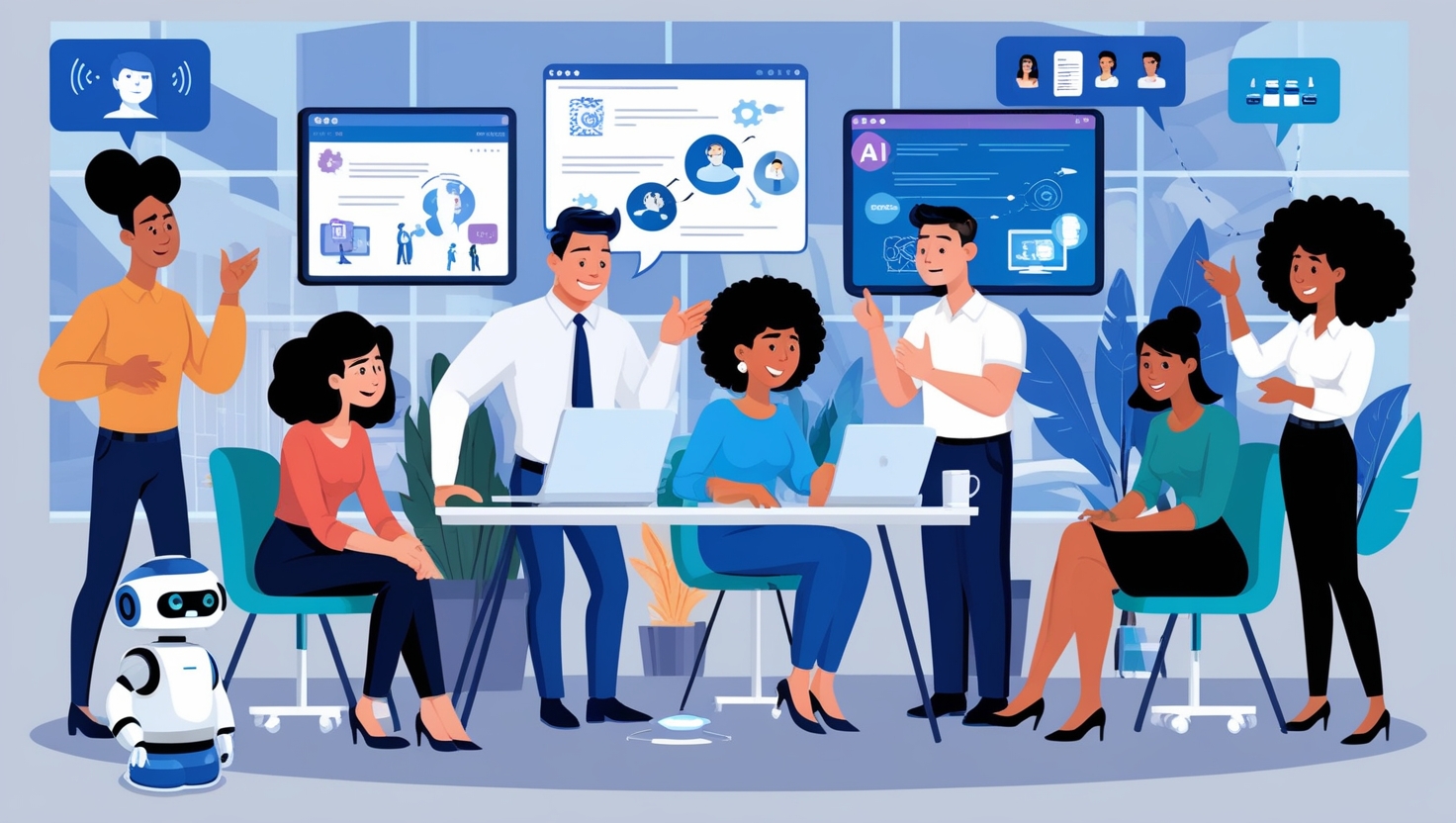
Job loss fears are a major barrier to AI adoption, but they can be mitigated through transparency, upskilling, and redefined roles. Organisations should emphasise AI as a tool for enhancing productivity rather than replacing jobs. Providing reskilling programmes, showcasing AI’s role in reducing repetitive tasks, and highlighting new career opportunities can ease concerns. By fostering a culture of learning and adaptability, businesses can help employees embrace AI as an asset rather than a threat.
Emphasise Task Automation, Not Role Automation
Frame AI as a means to remove repetitive tasks, enabling staff to redeploy their time on strategic or relationship-oriented work. Provide concrete examples. E.g., “The bot will handle data input so you can spend more time calling warm leads or refining marketing strategies.”
Reskilling and Upskilling Pathways
Offer training to handle the more complex, value-added tasks that remain or expand. If a data entry clerk can become the “AI workflow coordinator” or move into customer success analysis, job security improves. Outline these career paths, ensuring no one feels left behind.
Reassign Freed Hours
Organise brainstorming sessions: with menial tasks automated, what new projects can employees tackle? If staff help set these new goals, they see AI as an enabler of job enrichment rather than a threat.
“Showing employees exactly how they can grow, learn, and contribute post-automation is the best antidote to job fears,” advises Ciaran Connolly.
Building Trust in AI Decisions
Building trust in AI decisions requires transparency, accountability, and human oversight. Organisations should clearly explain how AI models work, ensure fairness by minimising bias, and provide employees with visibility into AI-driven processes. Regular audits, ethical AI guidelines, and a feedback loop for continuous improvement help reinforce confidence. When employees understand and see AI as a reliable, fair tool, they are more likely to trust and embrace its role in decision-making.
Explainability and Openness
Select AI solutions that offer transparent logic or at least generate interpretable outputs. Some vendors provide “explainable AI” features, detailing which factors influenced a recommendation or score. Share this info with users so they can see the rationale, not just a black-box verdict.
Mechanisms for Human Oversight
Establish guardrails: if an AI model flags a high-risk customer or recommends not approving a certain transaction, a human can quickly review and override if needed. This hybrid approach fosters confidence that AI doesn’t unilaterally rule.
Pilot Testing for Accuracy
Demonstrate how the AI was trained, tested, and validated. Show staff real results comparing AI outputs to manual approaches. If they see the system consistently performing well or improving over time, scepticism often subsides.
Designing Effective Training and Support

Effective AI training and support empower employees to confidently adopt new technologies. A well-structured programme should include hands-on learning, real-world applications, and continuous access to resources like workshops, e-learning modules, and mentoring. Offering personalised training based on roles and skill levels ensures relevance, while ongoing support—through help desks or AI champions—reinforces learning. By investing in comprehensive training, businesses can drive AI adoption and maximise its benefits.
Role-Specific Training Modules
A generic AI overview may not quell frontline staff’s apprehensions about day-to-day usage. Create modules or workshops tailored to each function (finance, marketing, HR). Show exactly how the AI tool helps their unique tasks, with live demos.
Hands-On, Interactive Sessions
Let employees practise with the AI tool in a sandbox environment. Encourage them to input mock data or run real scenarios. If they can experiment safely, they’ll gain fluency faster. Provide easy-to-follow cheat sheets or knowledge base articles for reference.
Ongoing Mentorship
Pick “super users” or AI champions in each department. They help colleagues trouble-shoot, gather feedback for improvements, and maintain momentum. This approach ensures consistent usage rather than post-training drop-off.
Continuous Refreshers
AI tools evolve, new features appear, or the business shifts priorities. Schedule periodic refresher sessions or micro-learning modules so staff remain updated. Celebrate new releases with short “what’s new” tutorials.
Handling Negative Reactions and Potential Sabotage
Negative reactions to AI adoption can stem from fear, misinformation, or resistance to change. In extreme cases, employees may even sabotage AI initiatives to protect their roles. Addressing these concerns proactively with open communication, clear job security reassurances, and involvement in AI planning helps ease tensions. Identifying and engaging resistant employees through personalised training and support fosters a sense of ownership. A transparent, inclusive approach minimises resistance and encourages a positive AI adoption mindset.
Recognise Symptoms of Resistance
Signs include staff ignoring the AI system, continuing manual processes, complaining that “the old way was simpler,” or subtle sabotage (inputting incorrect data). Promptly address these issues with empathy but firm guidance. Investigate if the AI tool’s interface or training is lacking—sometimes negativity stems from legitimate usability pain points.
Offer Channels for Feedback
Employees might feel powerless if they can’t voice concerns. Provide an open forum or anonymous feedback form for suggestions on how to refine the AI process. If the AI output is inaccurate in certain cases, let staff report these instances so the model can retrain or the workflow can adjust.
Realigning Performance Metrics
If staff used to be measured by data entry volume, they might resent automation that “removes their entire job measure.” Update performance criteria to reflect quality, collaboration, or user satisfaction. This ensures nobody is penalised for adopting AI-based efficiency.
Escalate if Malicious Behaviour Persists
In rare cases, employees might deliberately feed erroneous inputs or spread misinformation about the AI system. Address such sabotage swiftly, clarifying it jeopardises the company’s success. Combine disciplinary measures with attempts to understand deeper anxieties.
Communicating Wins and Iterating
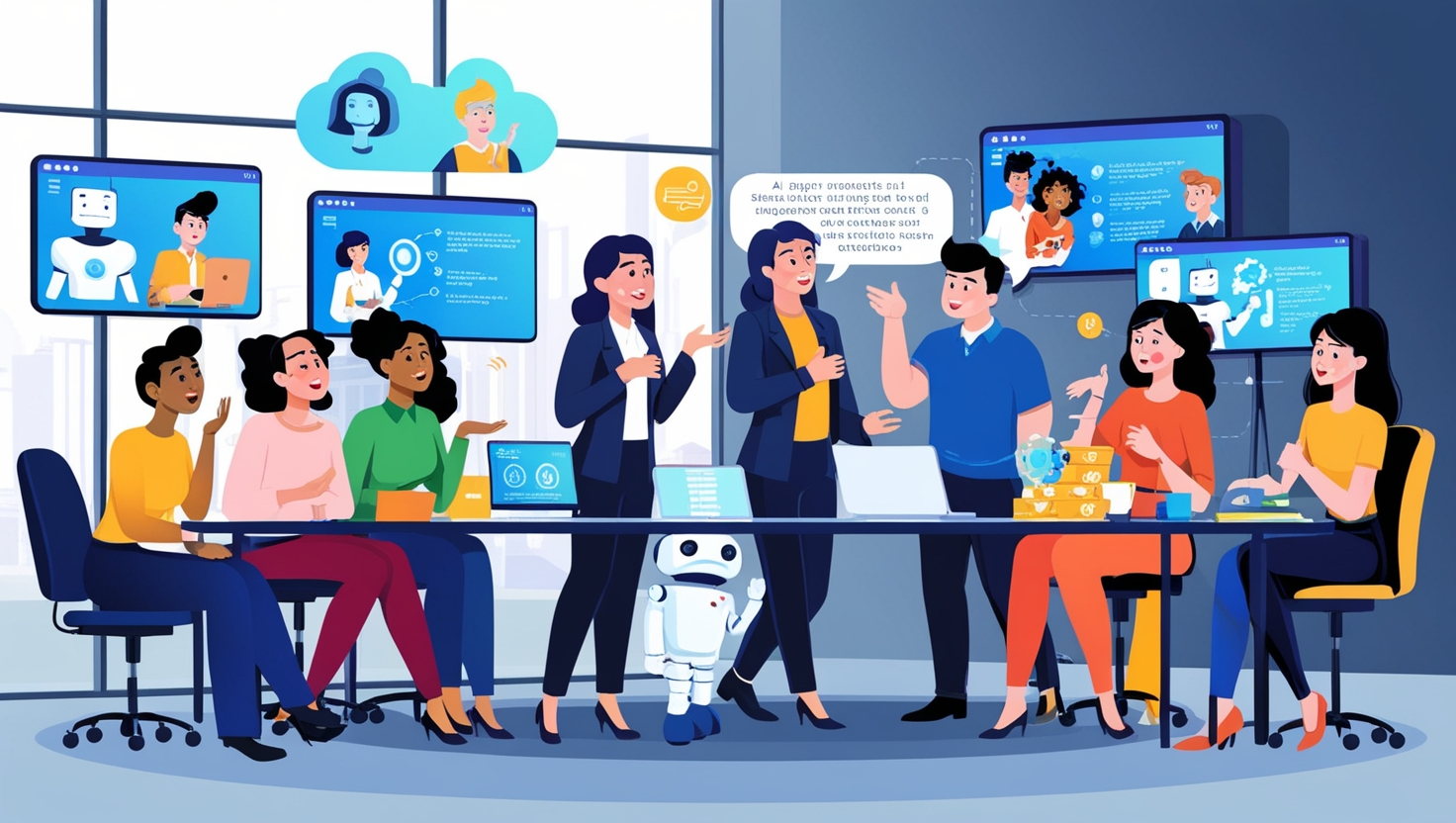
Celebrating AI successes and continuously refining strategies are key to sustaining momentum. Regularly share real-world improvements—such as time savings, reduced errors, or enhanced decision-making—to demonstrate AI’s value. Highlight employee contributions to reinforce engagement and trust. Gather feedback, analyse results, and iterate on AI implementations to address challenges and optimise performance. A transparent, evolving approach keeps teams motivated and fosters long-term AI adoption.
Frequent Transparency Updates
Share monthly or quarterly bulletins highlighting how AI solutions are performing:
- How many hours saved.
- Examples of reduced errors or new revenue from AI-based insights.
- User success stories, like an agent who closed deals faster thanks to lead predictions.
Celebrate Milestones
When a department hits a milestone—like automating 80% of routine tasks—acknowledge it publicly. Recognise staff who championed the initiative. Visible celebrations create positive associations with AI progress.
Iterative Improvement Loops
Even after initial rollout, gather suggestions on how to refine workflows, parameters, or interfaces. The best AI setups evolve with user feedback. This approach signals that adoption is co-owned by employees, not forced from above.
“AI’s success depends on a collaborative spirit. You need open feedback channels to keep the system aligned with real-world needs, ensuring staff remain enthusiastic,” highlights Ciaran Connolly.
Future Outlook: Sustaining a Pro-AI Culture
Sustaining a pro-AI culture requires continuous learning, adaptability, and leadership commitment. As AI evolves, organisations must foster an environment where employees stay curious, upskill regularly, and embrace innovation. Encouraging collaboration between teams, recognising AI-driven successes, and maintaining transparent communication will help reinforce AI’s role in business growth. By integrating AI into long-term strategies and ensuring ongoing support, companies can future-proof their workforce and stay ahead in an AI-driven world.
Continuous Learning Paths
AI technologies keep improving—introducing new features or expansions. Nurture a mindset where staff expect periodic upskilling. Offer micro-courses or advanced modules for those wanting deeper specialisation, fostering in-house expertise that adapts to the next wave of AI.
Embedding AI in Career Ladders
When employees see that “AI proficiency” is a valued skill for promotions, they’re more motivated to embrace it. Mention AI knowledge or automation leadership in job descriptions, performance reviews, and internal job postings.
Pushing Ethical Boundaries
As AI becomes more powerful, ensure your workforce remains aware of ethical considerations—bias, privacy, fairness. Provide guidelines on data usage and hold open dialogues on potential pitfalls. Responsible AI fosters trust among staff and customers, preventing backlash.
A Human-Centred Path to AI Adoption
Implementing advanced AI solutions is as much a people transformation as a technical one. By addressing fears head-on, structuring transparent communication, and providing thorough training, companies can shift staff from fearful sceptics to AI advocates. The time invested in change management pays off in smoother adoption, fewer project stalls, and a robust culture that sees AI as a catalyst for progress—not a disruptive threat.
In 2025’s competitive environment, those businesses that harness their employees’ enthusiasm, adapt job roles mindfully, and sustain open feedback loops around AI usage will likely outpace peers that treat staff as an afterthought. Success means remembering that human acceptance is the linchpin for AI’s transformative power.
